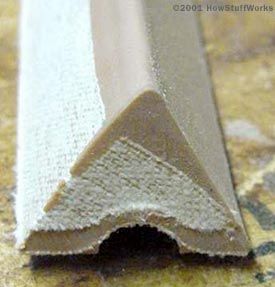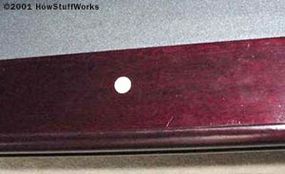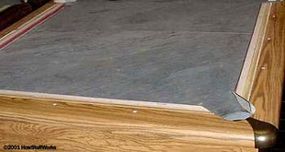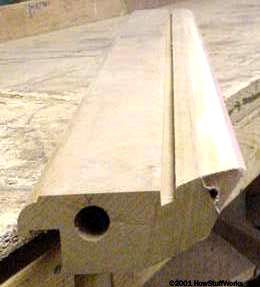Rails, Cushions and Felt
All around the edge of a billiards table are rails. Ranging from about 2.5 to 3.5 inches (6.35 cm to 8.89 cm) in width, the rails are normally made of the two pieces. The top part is made of the same hardwood or other material as the rest of the table. Glued to the bottom of this is a piece of of wood or MDF that the cloth will staple to when it is stretched over the cushion.
The cushion is a long, wedge-shaped piece of hard rubber that is glued to the side of the rail that faces into the table's playing surface. Cushions are covered with the same felt cloth used to cover the slate and should provide a consistent response to any ball that strikes them. All good tables will have K-66 cushions, which refers to the shape and angle of the cushion rubber.
Advertisement

Attached to the outside of each rail is the apron. Also called the blind, this is a strip of wood that matches the rest of the table. It is designed to hide the outside edge of the rail and should be very firmly secured to the rail.

The final piece of the table is the cloth. Billiard tables normally use tightly-woven cloth made primarily of wool with a synthetic such as nylon added for durability. The cloth provides a consistent and smooth playing surface. Billiard cloth is often referred to as felt, but it actually is nothing like real felt. Real felt is not a woven material but is formed from compressed and matted fibers and would not work well at all as a smooth playing surface.

Now that you know how the table is made, what can you do with it?
